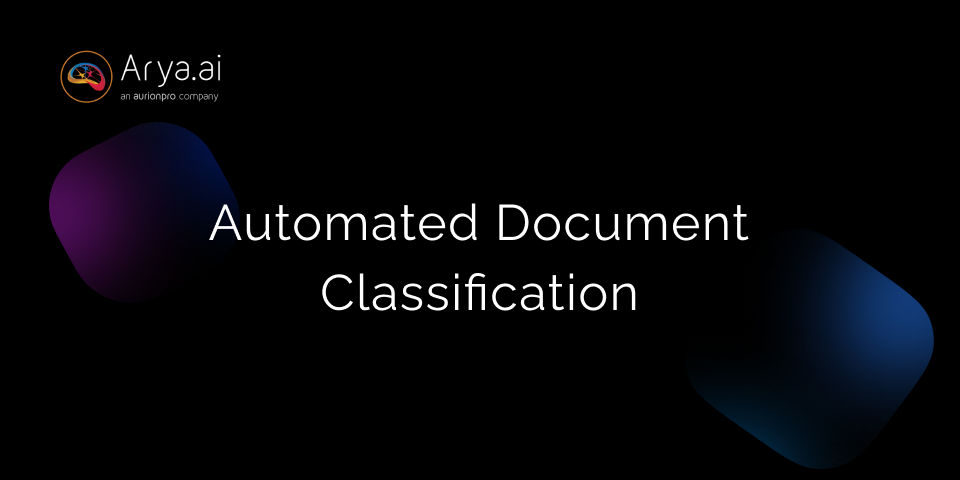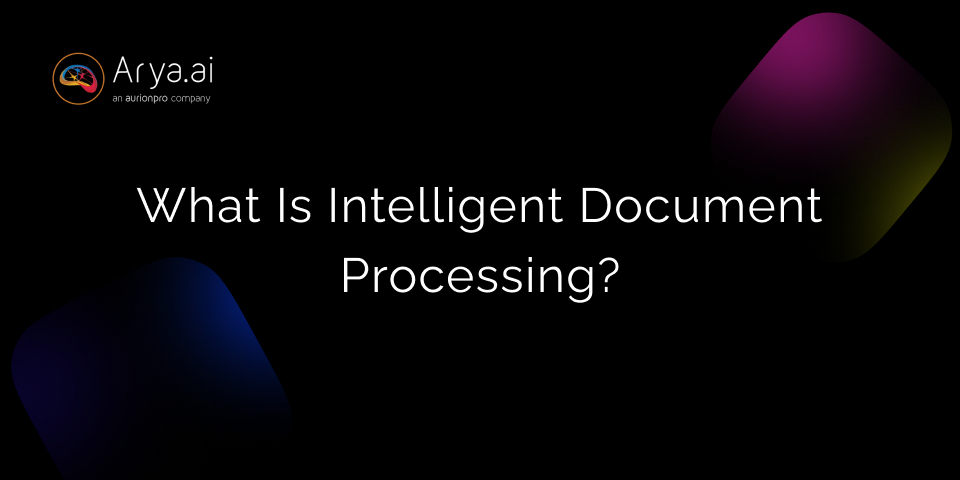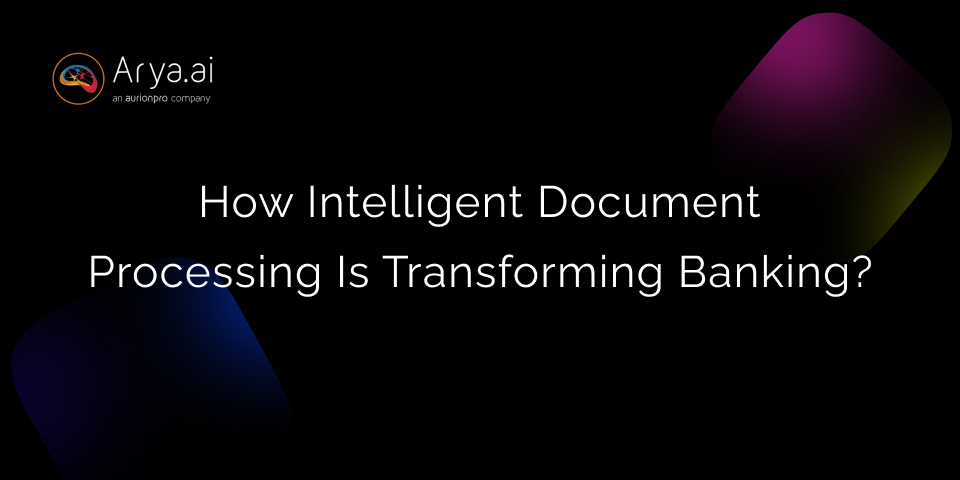TL;DR:
- Automated document classification organizes and processes large volumes of documents based on text, images, and special characters, including handwritten content.
- Techniques like Computer Vision Recognition, Optical Character Recognition (OCR), and Natural Language Processing (NLP) power Intelligent Document Processing (IDP) systems to handle diverse data formats.
- Automation is prone to challenges such as data diversity, ambiguous content, limited training data, scalability issues, biases, interpretability concerns, and data privacy; AI helps overcome these obstacles.
- Partnering with the right IDP solution providers can simplify document processing, and enhance accuracy over time through adaptive learning while protecting against document fraud.
- This enables businesses to improve accessibility, productivity, and decision-making while fortifying defenses against fraud.
Data is crucial for any organization. Financial institutions collect and store a lot of customer data in their database—but it's of greater use only when interpreted and organized properly.
From loan applications and P&L statements to bank statements, documents contain information that is sensitive and useful for multiple use cases such as onboarding, fraud detection, and more.
All this information needs to be structured. That's where automated document classification comes into play!
Overview of Document Classification
Document classification organizes documents into different categories based on their characteristics and content to simplify accessibility.
Traditionally, it was done manually. Now, the increased influx of documents requires automated document classification as well as intelligent processing.
Methods for Content Categorization/Classification
Documents are a combination of text (optical and hand-written), images, special characters, and more. Based on this nature, we can classify them into the following categories:
- Text
As you might have already guessed from the name, text classification involves extracting and analyzing the document's textual content. The textual content can be a sentence, paragraph, word, or phrase. There is less context to work with; this classification type is considered more complex than others. It works well for text-heavy documents like emails, reports, and articles.
- Image
The image-based classification method only focuses on analyzing the visual content of documents. It allows you to gain valuable insights from visual data. This classification process is done for graphs, charts, tables, infographics, etc.
- Special Characters & Handwritten Text
The classification of special characters involves identifying and interpreting symbols and handwritten text. These can include signatures and other unique characters that convey specific meanings. ICR plays a key role in identifying and interpreting such elements.
Benefits of Automated Document Classification
Leveraging automation to classify documents can provide multiple benefits to organizations:
- Enhanced Accuracy: Human error is an unavoidable aspect of manual document analysis. Errors are misclassifications and oversights are always apparent. In contrast, AI-based classification systems leverage advanced machine learning algorithms to achieve higher accuracy.
- Scalability: AI-based classification systems are inherently scalable and can easily process vast documents. Whether handling thousands or millions of documents, AI systems can effortlessly scale to meet the demands of any workload.
- High Speed and Efficiency: AI-based classification systems can operate 24/7, automating tedious tasks and accelerating the pace of document analysis.
- Adaptive Learning: Unlike static rules, AI/ML models evolve over time. Their accuracy and adaptation to changing document formats and content increases as they are fed more data.
- Cost Savings: Automated classification systems offer a cost-effective alternative. They automate repetitive tasks and minimize the need for human intervention. Such a technology allows organizations to allocate valuable time and resources for tasks that allow them to focus on strategic initiatives.
How can AI help with Document Analysis?
AI helps you intelligently automate document classification and processing. Intelligent Document Processing, or IDP, is a holistic approach to document management that leverages a suite of AI and ML technologies to automate and optimize document-centric workflows. This solution automates the entire categorizing process and improves the overall accuracy.
When you enter a document in an IDP system, it is automatically identified, classified, assembled, and processed according to its nature.
What are the Intelligent Document Processing Techniques?
Take a look at the powerful technologies that power IDP:
- Computer Vision Recognition
This AI-powered technology enables computers to "see" the visual content of documents such as images and videos. It helps you locate visuals by applying filtering and searching options.
Object Detection is another part of computer vision recognition. It usually applies to businesses dependent on a large-scale classification to operate smoothly. For example, object detection is highly useful for a logistics business, where scanning QR codes is part of daily operations.
- Optical Character Recognition (OCR)
OCR or Text Recognition is used to mine text from scanned documents and images to be converted into a machine-readable format. Typically, this technology is paired with AI and ML to achieve greater accuracy.
- Rule-based Text Recognition
Rule-based text recognition relies on predefined rules to extract specific information from text documents. This approach allows users to establish rules based on patterns, keywords, or regular expressions and facilitates precise identification and extraction of relevant data elements.
- Natural Language Processing (NLP)
This technology analyzes the structure and meaning of text, which enables tasks like document summarization, topic classification, and even answering questions directly from the content. It provides deeper insights and understanding of textual documents. NLP can also delve into the semantic meaning of text. That means it can categorize documents according to content.
While implementing AI to document classification and analysis, you can take either of two approaches:
- Supervised: In this approach, you can define tags for various documents, such as invoices, contracts, emails, etc., and classify documents based on predefined categories.
- Unsupervised: The learning process occurs without prior training on labeled data. Instead, groups of words, sentences, or phrases are clustered together based on inherent similarities and utilized for document classification purposes.
The Challenges of AI-Based Document Classification
While AI-powered document classification holds immense potential for data organization, efficiency, and insight extraction, it's not without its challenges. Here are the most common challenges businesses face when implementing AI-based document classification:
1. Diversity in Data
Documents come in various formats, languages, and structures. The sheer diversity of data—from PDFs and spreadsheets to handwritten notes and images—poses a significant challenge for AI systems.
2. Ambiguous and Noisy Content
Documents are often riddled with ambiguity, typos, and inconsistent terminology, which can mislead AI models.
3. Limited Training Data
AI models require large amounts of high-quality, labeled data to perform effectively.
4. Scalability Issues
As the volume of documents grows exponentially, AI systems must scale accordingly.
5. Bias and Fairness
AI models can inadvertently learn and propagate biases present in training data.
6. Interpretability and Explainability
AI models, especially deep learning ones, often act as "black boxes."
7. Data Privacy and Security
Processing sensitive documents raises concerns about confidentiality and compliance.
This necessitates partnering with the right Intelligent Document Processing (IDP) solutions provider. The right IDP provider brings specialized expertise, advanced technologies, and tailored strategies to address the unique challenges of AI-based document classification. This is particularly true when document fraud is a growing concern, especially for financial institutions.
Document Fraud: A Growing Concern
Documents are supposed to serve as the cornerstone of trust and transactions. Yet, this reliance becomes a vulnerability exploited by a growing threat: document fraud. Forged invoices, fake identities, and misrepresented data, as well as the scale and sophistication of these scams, are escalating and impacting individuals, businesses, and entire economies.
Beyond the immediate financial losses resulting from fraudulent transactions or contracts, document fraud undermines trust and credibility, tarnishing the reputation of businesses and eroding customer confidence.
Document fraud not only affects businesses but also directly threatens individuals' privacy and security. Identity theft, one of the most common forms of document fraud, can wreak havoc on victims' lives, leading to financial ruin, damaged credit, and emotional distress.
Technological advancements like deepfakes and AI-powered forgery tools empower fraudsters with new capabilities, making it increasingly difficult to discern what is real from what is fake.
How AI Saves the Day with Document Tampering Detection

While the democratization of AI can be blamed as one of the factors enabling fraudsters to commit serious money laundering crimes, AI also provides a solution to this threat.
- Advanced Image Analysis
AI algorithms scrutinize every aspect of an image, such as pixel-level comparisons, texture analysis, object-lighting consistency, and much more. Along with this, AI, paired with deep learning architectures like convolutional neural networks (CNN), can meticulously analyze the visual content of documents, identifying anomalies and alterations that may indicate tampering.
- Pattern Recognition
Document tampering often leaves behind telltale patterns and artifacts that betray its deceitful nature. AI excels at pattern recognition, discerning subtle deviations from the norm that indicate forgery.
- Document Metadata Analysis
Beyond the surface-level examination of visual content, AI delves into the hidden metadata embedded within digital documents. Metadata analysis allows AI systems to scrutinize timestamps, authorship information, and revision history to uncover discrepancies that can signal tampering attempts.
- Anomaly Detection
Document tampering often involves subtle alterations designed to evade detection by human observers. AI employs anomaly detection techniques to identify deviations from expected patterns or distributions within documents, flagging suspicious areas for further investigation.
Whether it's inconsistencies in font styles, discrepancies in alignment, or unexpected changes in content, AI's keen eye for anomalies is an indispensable tool to combat document tampering.
Simplifying Document Processing and Classification Challenges with Arya AI's IDP Solutions
Arya AI's IDP platform leverages cutting-edge AI and machine learning technologies to automate document processing with high accuracy and efficiency. It handles diverse data formats—including text, images, special characters, and handwritten content—ensuring seamless processing of all your documents. With adaptive learning capabilities, the system evolves over time, improving performance as it processes more data.
In addition to streamlining document classification, Arya AI's solutions incorporate robust security features to safeguard against document fraud. Advanced algorithms detect anomalies and inconsistencies within documents, enhancing fraud detection and maintaining the integrity of your data. If you'd like to learn more, please book a demo here.
Conclusion
We live in an era where every invoice, contract, and report holds invaluable insights and sensitive data. Businesses must organize documents into relevant categories based on content and characteristics to improve accessibility, productivity, and decision-making prowess.
The need for an intelligent document management solution has never been more pressing. With AI-based classification systems, organizations can overcome manual processing challenges, achieve higher accuracy levels, and scale effortlessly to meet the demands of your growing business.
This transformative technology can also help you fortify your defenses against document frauds that can harm your business.





